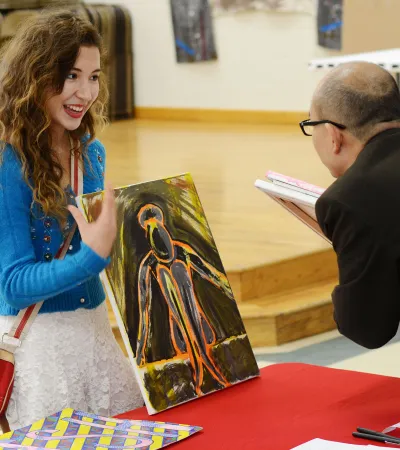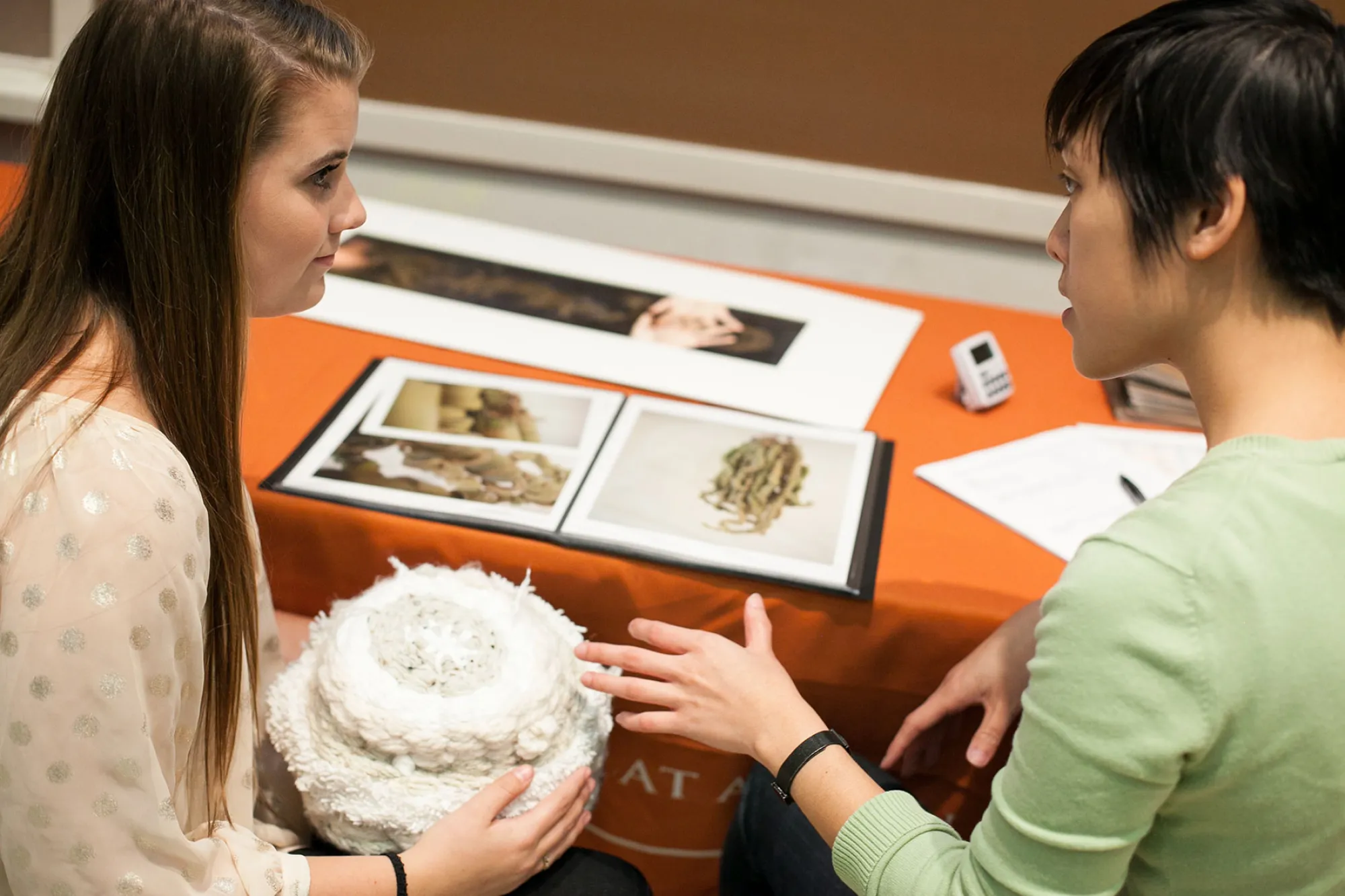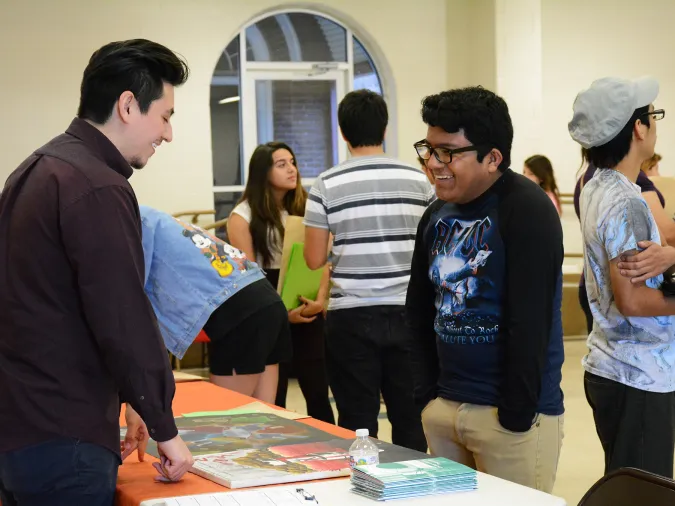
Preparing your Portfolio
Your portfolio is an opportunity to show us your technical skills, ideas, creativity, and what makes you unique!
Note
- Only applicants to the Studio Art (BFA/BA) major are required to submit a portfolio.
- Applicants to Art Education and Art History do not submit a portfolio.
Portfolio Submission Deadlines
- First-Year applicants — December 1
- External Transfer applicants — March 1
- Internal Transfer applicants — May 1
What's required in the portfolio?
- Include 12–15 works of art in your portfolio, with 2 pieces being made from direct observation.
- The other pieces of your portfolio can be whatever you like.
- Artist statement – see further information below
What does working from direct observation mean?
- Working from direct observation means to create a piece without using photographic or outside references.
- Use only what you see in front of you to create your work.
- Usually observational works are made traditionally, using drawing or painting techniques, but we welcome more contemporary methods too.
Direct Observation Examples
- Still Lifes
- Figure Drawings
- Self Portraits
- Landscape/Architectural Studies
Arrange a still life of your favorite objects, draw the inside of your bedroom, or use a mirror to create a self portrait. Go wherever your creativity takes you!
Can I include captions for the artworks included in my portfolio?
- When you upload your artworks, you will have space to include a title, dimensions, medium, and description of the work.
- It is not required to include a title, dimensions, medium, and description, but this information is helpful for our reviewers to know.
- Within the description, it is useful to share things that are not evident from viewing the work. For example, was this the first time you used this medium? Is this work a part of a series or an assignment? If the content of the piece is not clear, tell us what the piece is about.
What should I include in my artist statement?
- When uploading your portfolio, you will first be prompted to submit an artist statement.
- In the artist statement, please describe the art you make and why you make it. Feel free to elaborate on what your experience with art has been thus far, what art instruction you may have received in school and outside of school, and future goals you have within art.
- The artist statement should be 1–3 paragraphs in length.
What makes a portfolio stand out?
- An excellent portfolio is a balance of three important things: your technique, your creativity, and what makes you unique.
- As an interdisciplinary program, we appreciate concept and experimentation just as much as technical skill!
- We encourage you to submit work from a range of mediums. All mediums are welcome, including (but not limited to):
- 2D and 3D Creations
- Digital Media
- Photography
- Performance
- Animation
- Printmaking
- Craft Arts
- A stand-out portfolio is also photographed well.
- These days, a smart phone is all you need to properly document your artwork. Look up tutorials on YouTube and other platforms for tips on photographing your work at home using simple tools.
Who reviews my portfolio?
Each degree program has a faculty committee who review and evaluate students for admission. They review all of your application materials holistically, weighing your artistic, academic, and personal strengths.
How important is the portfolio in the application process?
The portfolio is one of the most important components of your application! Please take your time in submitting a thoughtful, well-prepared portfolio.

When Submitting your Portfolio
- Before beginning your portfolio submission, you must have a UT Austin application on file. Find out how to apply.
- When starting your portfolio submission, you will be prompted to complete a form before moving forward to the portfolio uploader. This form requires your UT EID and will ask you to submit an artist statement (see section above for more information). Once this information is submitted, you will proceed to the portfolio uploader.
- You may upload 12–15 files for your portfolio submission (each file represents one artwork). If you want to submit multiple items in a series or detail shots of artworks, please combine images into a single PDF file.
- For each file uploaded, a text box will be provided in which you can include a title, dimensions, medium, and description of the work.

Portfolio Reviews
We do not offer one-on-one portfolio reviews to prospective students. We host portfolio and application workshops in the fall hosted by admission representatives and faculty. Make sure to sign up for notices about admission events to receive invites!
Portfolio questions? Reach out to our admissions team!

